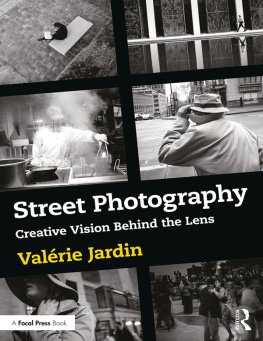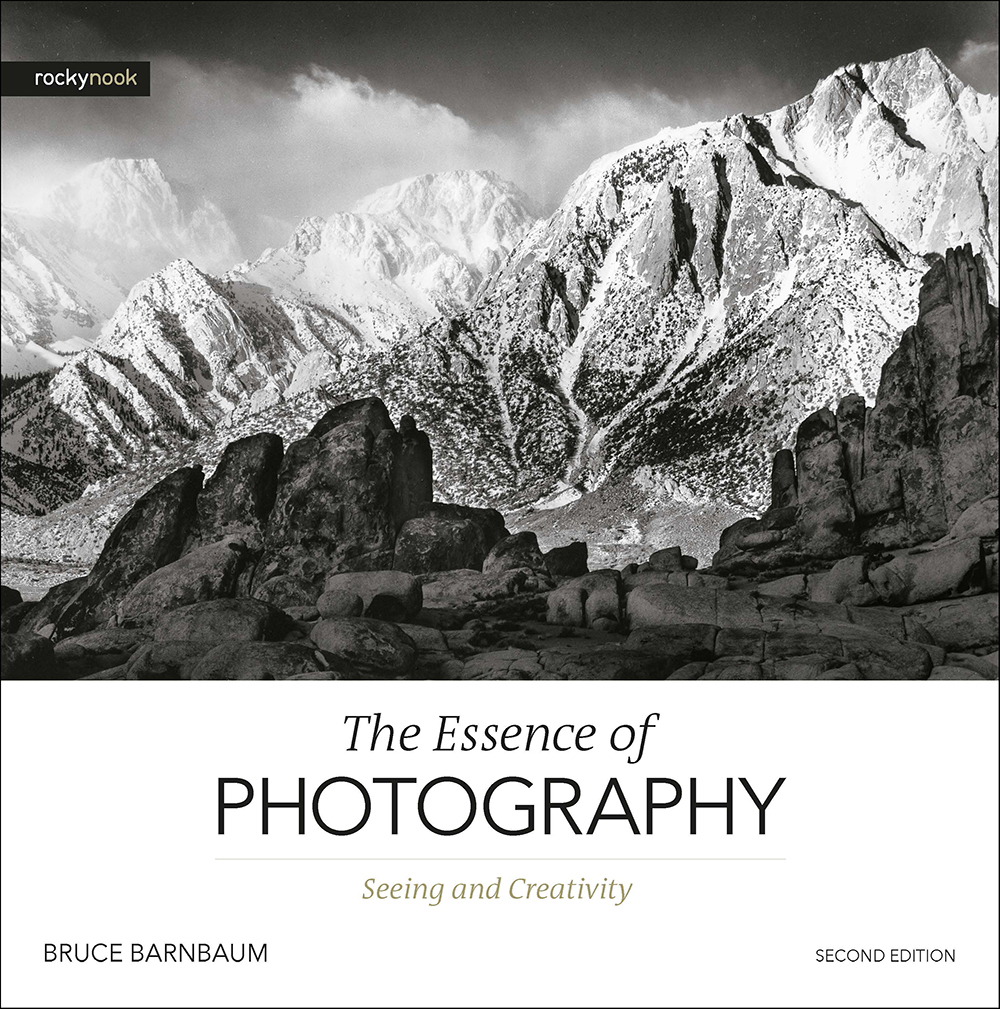BRUCE BARNBAUM
The Essence of Photography
Seeing and Creativity

The Essence of Photography, 2nd Edition
Bruce Barnbaum
www.barnbaum.com
Editor: Jocelyn Howell
Project manager: Lisa Brazieal
Marketing coordinator: Mercedes Murray
Layout and type: Petra Strauch
Cover design: Aren Straiger
Cover photos (front and back): Bruce Barnbaum
ISBN: 978-1-68198-635-7
2nd Edition (1st printing, March, 2021)
2021 by Bruce Barnbaum
All images Bruce Barnbaum unless otherwise noted
Rocky Nook Inc.
1010 B Street, Suite 350
San Rafael, CA 94901
USA
www.rockynook.com
Image on used by permission.
Moonrise, Hernandez, New Mexico, 1941
Photograph by Ansel Adams
Collection Center for Creative Photography, University of Arizona
2013 The Ansel Adams Publishing Rights Trust
Distributed in the UK and Europe by Publishers Group UK
Distributed in the U.S. and all other territories by Ingram Publisher Services
Library of Congress Control Number: 2019957979
All rights reserved. No part of the material protected by this copyright notice may be reproduced or utilized in any form, electronic or mechanical, including photocopying, recording, or by any information storage and retrieval system, without written permission of the publisher.
Many of the designations in this book used by manufacturers and sellers to distinguish their products are claimed as trademarks of their respective companies. Where those designations appear in this book, and Rocky Nook was aware of a trademark claim, the designations have been printed in caps or initial caps. All product names and services identified throughout this book are used in editorial fashion only and for the benefit of such companies with no intention of infringement of the trademark. They are not intended to convey endorsement or other affiliation with this book.
While reasonable care has been exercised in the preparation of this book, the publisher and author assume no responsibility for errors or omissions, or for damages resulting from the use of the information contained herein or from the use of the discs or programs that may accompany it.
This book is printed on acid-free paper.
Printed in China
To you, the reader,
Seeking meaning and creativity.
In hopes that this book
May be of assistance.
Bruce Barnbaum
31417 Mountain Loop Highway
Granite Falls, Washington 98252
USA
Phone or Fax: (360) 691-4105
www.barnbaum.com
Table of Contents
Introduction

The concept that led to the first edition of this book was a photography workshop I had been presenting for several years titled, The Art of Seeing and Creating through the Camera. In many ways this is a scary topic because so many people feel that creativity cannot be taught or learned. That may or may not be trueI doubt that it can be proved or disprovedbut it is a certainty that creativity can be properly promoted or badly squelched. The workshop was designed to promote creativity, and the first edition of The Essence of Photography expanded on those thoughts.
As time went by, it became obvious to me that far more could be put into the book. These were topics that often surfaced during workshops, plus some that came up in essays Ive read about photography, but hadnt been discussed in the first edition. This second edition expands on the thoughts of the first edition, always with the focus on promoting photographic creativity.
How can creativity be promoted or squelched? Perhaps a simple example can clarify this. In elementary school, children draw pictures of their family with crayons. A teacher who is supportive of creativity may look at one of those crayon drawings and ask, Oh, is that your mom, and your dad, and is that your brother or sister... or is that you? This question can encourage creativity on the part of the child. A teacher who squelches creativity may look at the same crayon drawing and ask, Is your family really green?
Now, the child may have chosen a green crayon because he or she liked the color, or it happened to be the first crayon that came out of the box, or perhaps for no reason at all. But the first question encourages the child, whereas the second one implies that the kid did something wrong, something that needs to be addressed and corrected. The second question squelches creativity; the first helps to promote it.
My intent in my Seeing and Creating workshops, and in this book, is to promote good seeing, to promote personal intuition, and to promote creativity. If the workshops and this book actually teach any of those things, so much the better. I won't make the claim that they do, but I'll cling to the hope that they may. I approach those workshops and this book as more of a facilitator than an instructor. I have much to learn about creativity, and that's part of the impetus for the workshops and for this book. Ive always felt that youre either learning or youre dead. I'm continually looking for ways to expand my own creative abilities and to push myself higher up on the learning curve to accomplish that.
In this book I offer no formulas for success in developing creativity because none exist. This book is not meant to be followed in a step-by-step manner, as would be the case with a camera manual or instructional book. Instead, my hope is that the ideas discussed within these pages may stimulate further thought on your part that can lead to new, creative approaches.
Because I have over fifty years of experience in photographydoing my own personal work throughout that entire fifty-year period, and commercial work for the first fifteen years, while also teaching workshops for much of my photographic careerI feel that my experiences and observations hold remarkable lessons that could be useful to others.
Some skeptics may view these experiences as little more than personal anecdotes that have little relevance to anyone but me. I think they go a lot further. Just ask yourself how you learn. You learn from books and lectures, but much of what you learn comes from personal experiences. Therefore, I feel important lessons can be learned from these experiences if they are delved into as more than mere anecdotes, and as experiences that offer lessons not only for me, but also for a far wider audience. I present these experiences throughout the book in hopes that they can be particularly instructive to students of photography.
So, here is what I intend for this book to be about, and what I intend for it not to be about:
- It's about expressing yourself through photography in a way that is meaningful to you and to others, through imagery that can be lasting.
- It's about using photography as a visual research laboratory, whether you're using traditional film and a darkroom, digital sensors and computers, a combination of the two, or anything else that can lead to imagery.
- It's about visual exploration, experimentation, and personal satisfaction.
- It's about encountering a scenecreated or foundand recognizing the potential for personal expression within it.
- Its about recognizing what is photographically important to you, and what is not.





